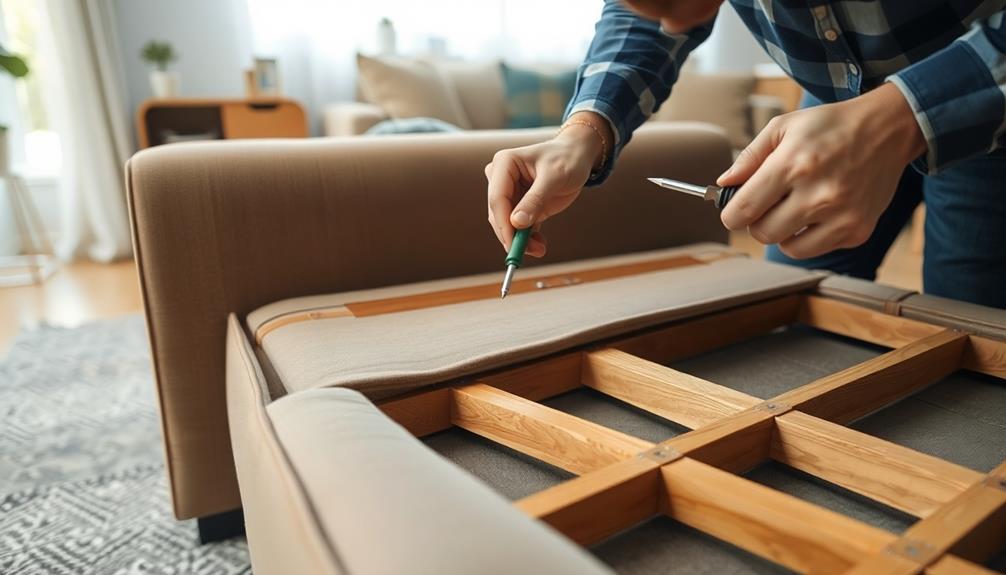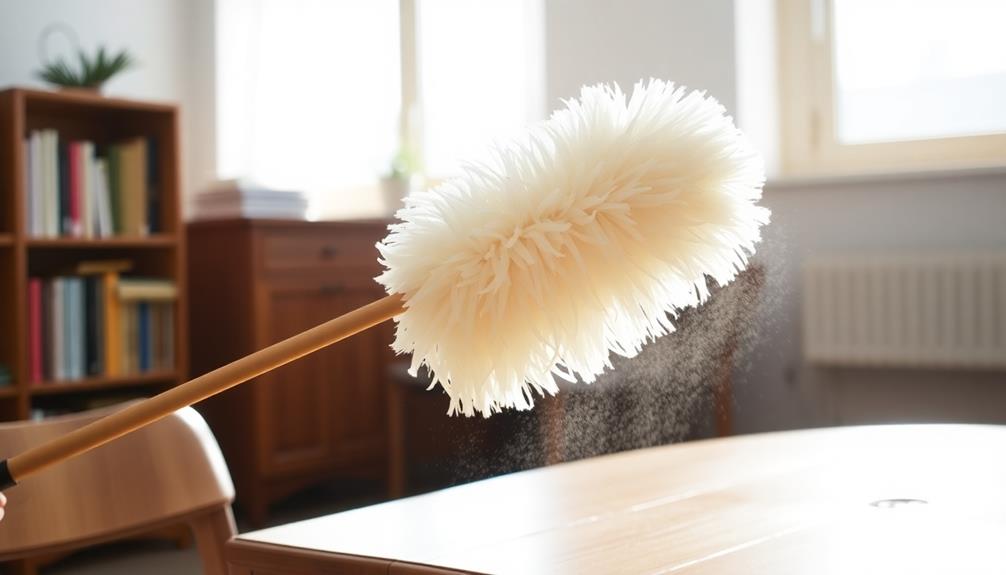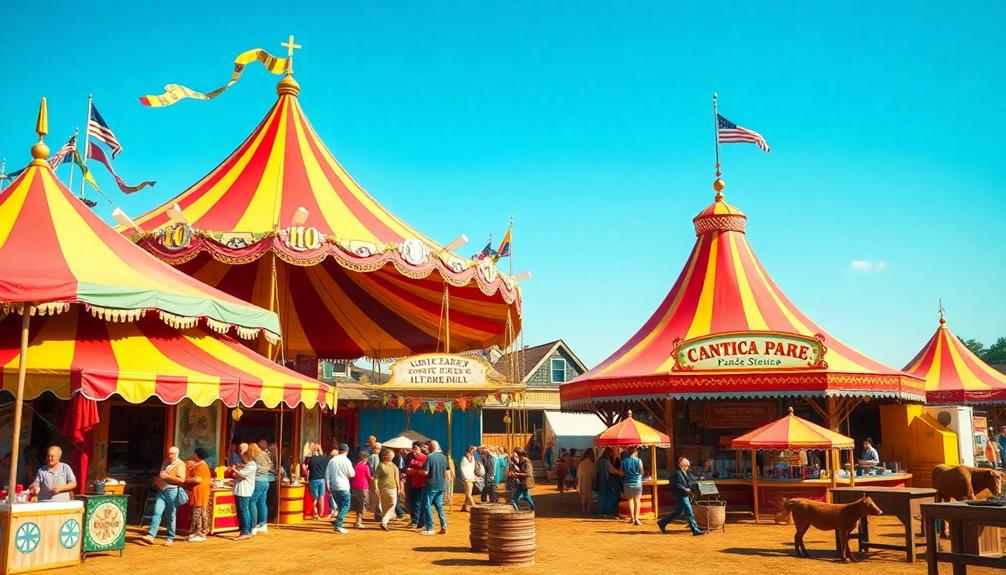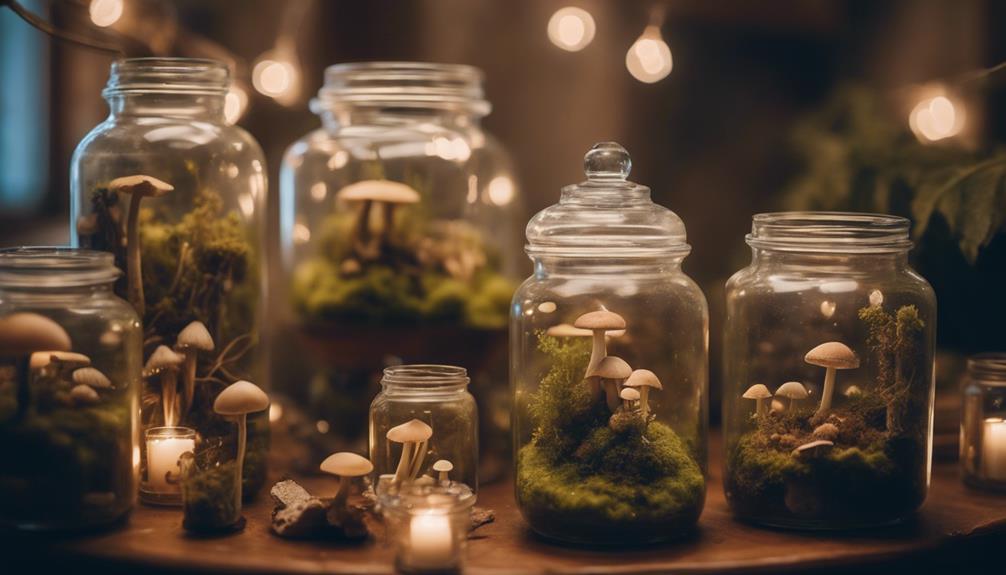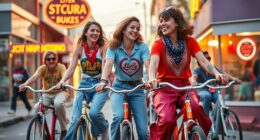To start dismantling a sofa, you should first assess its type and structure. Make sure your work area is clear and gather necessary tools such as screwdrivers, an Allen wrench, and a staple puller. Start by removing any loose cushions, then proceed to unscrew the hinge arms that connect the mattress frame. Use the staple puller to take off any visible staples from the upholstery, and carefully cut along the seams for a neat removal. After the upholstery is off, disassemble the frame by carefully organizing and keeping track of all screws and fasteners. Don’t forget to check for any hidden fasteners as well. If you would like more detailed instructions on each step, there is plenty more information to explore.
Key Takeaways
- Assess the sofa type and gather essential tools like screwdrivers, an adjustable wrench, and a staple puller for disassembly.
- Remove loose cushions and inspect for hidden fasteners before unscrewing hinge arms and upholstery.
- Use a staple puller to extract visible staples and a box cutter to carefully cut fabric along seams.
- Organize removed components in labeled bags to facilitate easier reassembly later and maintain a clean workspace.
- Wrap disassembled parts in protective materials and secure them for safe transport, considering eco-friendly disposal or recycling options.
Preparation for Disassembly
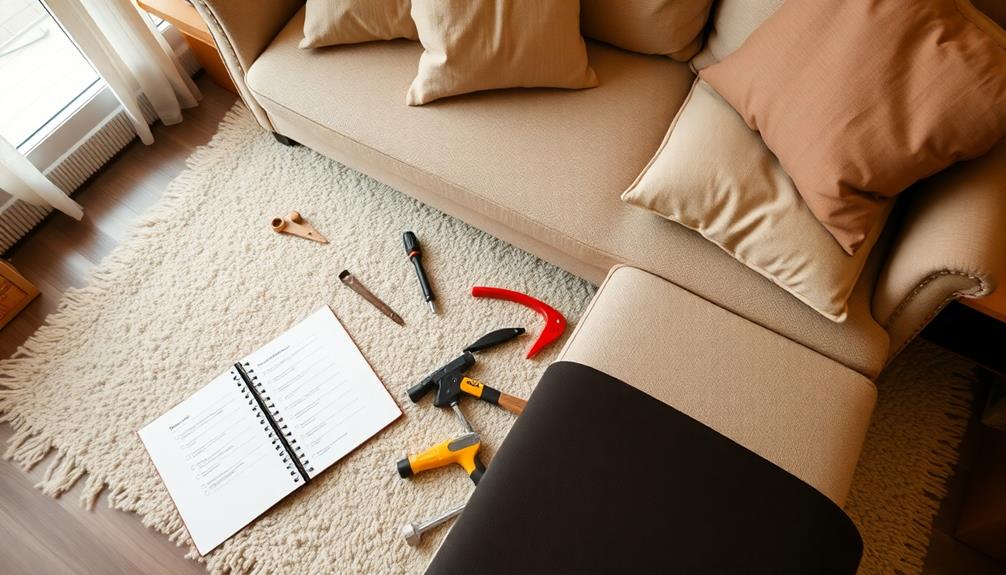
Before you plunge into dismantling your sofa, take a moment to prepare your workspace and gather the right tools. Start by evaluating your couch type and structure, as this will help you identify the best approach for disassembly. Understanding its components is essential to avoid damaging anything during the process.
Additionally, guaranteeing that your workspace is clear of clutter can help you maintain focus on the task at hand. For those interested in maintaining their furniture, top-rated mechanic shops are known for their expertise in cleaning services that can extend the life of your sofa.
Next, clear the area around your sofa. Remove surrounding furniture and obstacles to create a clean workspace that allows for ample movement. This preparation for disassembly will guarantee your safety and efficiency as you work.
Now, gather essential tools like a screwdriver set, Allen wrench, box cutter, staple puller, and handsaw. These tools are necessary for dismantling the sofa effectively.
Before diving in, check for any hidden screws or fasteners. Finding these beforehand prevents frustration and helps you avoid overlooking important components.
Initial Steps to Dismantle
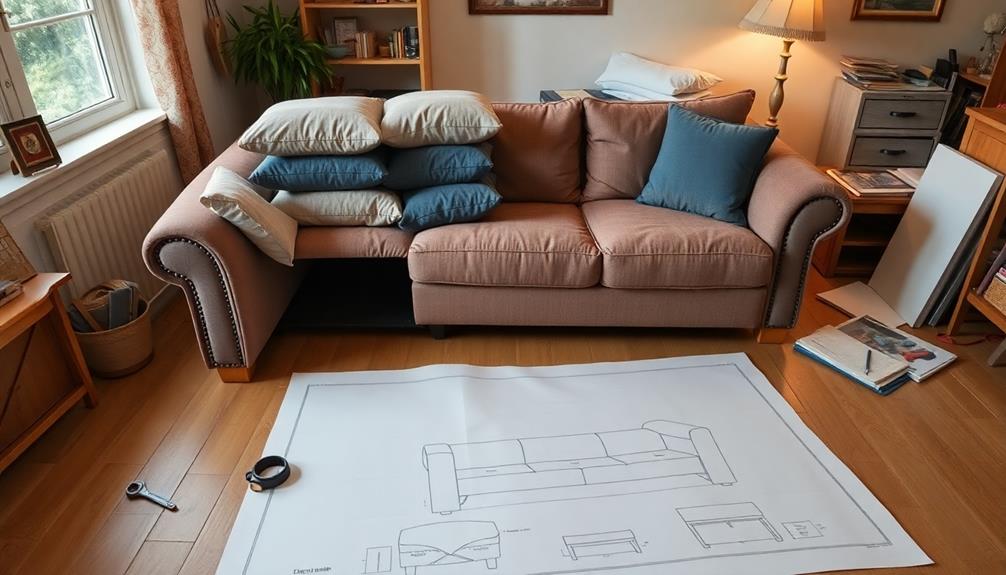
With your workspace prepared and tools gathered, you're ready to start dismantling your sofa. Begin by removing any loose cushions and setting them aside to create a clear area for disassembly. If your sofa includes a mattress, extract it first to simplify the process.
It's also wise to confirm your workspace is well-lit and organized, as this can help prevent any mishaps while handling tools and parts. Additionally, it's beneficial to have a budget plan for any potential costs associated with repairs or reupholstering.
Next, locate the hinge arms that connect the mattress frame to the sofa. Unscrew these carefully, making sure you keep track of all fasteners, as you'll need them for reassembly later. Once the mattress frame is removed, focus on the upholstery.
Identify and remove any upholstery fasteners, such as staples or tacks, using a staple puller. This way, you can preserve the fabric if you want to reuse it. If you don't plan on reusing the upholstery, prepare to cut or rip the fabric.
Make sure to carefully note the seams to avoid damaging the underlying sofa frame. Take your time with this step; confirming a clean removal can save you headaches later. By following these initial steps, you'll be well on your way to successfully dismantling your sofa for further repairs or disposal.
Upholstery Removal Techniques
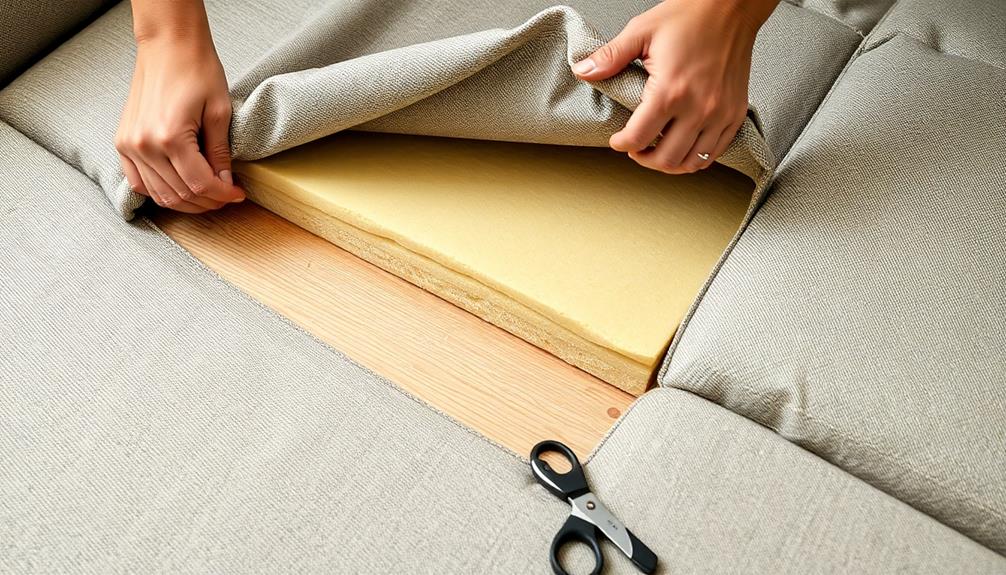
When tackling upholstery removal, start by using a staple puller to gently extract any visible staples holding the fabric in place. Be careful not to damage the upholstery if you plan to reuse it.
To help maintain a clean workspace, consider using essential oils for calming effects as you work through this process.
Next, for any attached upholstery, grab a box cutter and cut along the seams and edges. Make clean cuts to guarantee easier removal of the fabric.
As you work, keep an eye out for hidden fasteners or tacks that might be securing the upholstery. Use a screwdriver or pliers to remove these as needed.
Once you've detached the fabric, inspect the foam cushions for any wear or damage. If you find unusable materials, consider recycling options.
To keep your workspace organized, store the removed upholstery materials separately in a designated area. This will help prevent damage and make it easier for you to manage everything, especially if you plan to reuse or recycle the fabric later.
Frame Disassembly Process

To start the frame disassembly process, you'll need the right tools at hand.
It's crucial to verify that your workspace is clean and organized to avoid losing any components during the process.
Additionally, considering the importance of maintaining your surroundings, you might want to keep the area free of dust and allergens, much like the way you'd maintain an efficient air purifier maintenance routine.
Follow a step-by-step dismantling guide to guarantee you take apart the sofa systematically and efficiently. Start by removing any cushions or accessories to ensure a clear workspace before tackling the frame. When taking apart a reclining sofa, be sure to detach the backrest by locating and releasing the locking levers, often found at the base of the sofa. Finally, unscrew or unbolt the armrests and reclining mechanisms, keeping screws and bolts organized for easy reassembly later.
This approach will help you avoid losing any components and make reassembly much smoother.
Tools for Frame Disassembly
Dismantling a sofa requires specific tools to make the frame disassembly process efficient and straightforward.
You'll want to gather the right equipment to tackle screws holding the frame together and make your work easier. For instance, ensuring that you have a proper understanding of the proper diet for hamsters can inform your approach to maintaining any upholstery materials that might attract pests.
Here's a list of essential tools you'll need:
- Phillips Head Screwdriver: This tool is essential for removing screws from the arms and seat section of the sofa frame. Most furniture uses these fasteners, so it's a must-have.
- Adjustable Wrench: Use this versatile tool to loosen any nuts and bolts securing the frame components. It'll help you easily disassemble the sofa without excessive force.
- Staple Puller: Make sure to have a staple puller on hand to remove any staples securing the upholstery to the frame. This step is important for accessing the internal structure.
Additionally, if you encounter larger frame sections that can't be unscrewed, a handsaw may be necessary.
As you work, organize and label all removed screws and fasteners in plastic bags to simplify the reassembly process later on.
With these tools, you're well-equipped to tackle the sofa frame disassembly.
Step-by-Step Dismantling Guide
Flipping the sofa upside down gives you immediate access to the frame, making it easier to start the disassembly process. First, focus on the legs; you can either twist them counter-clockwise or unscrew any fasteners holding them in place.
Once the legs are off, grab your screwdriver. Use it to systematically unscrew any visible bolts or screws that connect the arms and seat section to the couch's frame. It's also a good idea to reflect on any appliance maintenance plans you might need for other furniture items in your home during this process.
Next, carefully detach the backrest. Locate any locking mechanisms or fasteners securing it and unscrew them. If you encounter larger sections of the frame that seem impossible to disassemble with standard tools, don't hesitate to use a handsaw for those stubborn parts.
As you take apart a sofa, keep things organized. Collect all removed screws and fasteners in plastic bags, labeling them for easier reassembly later.
If your sofa has a mattress, make sure to remove it before you plunge into the frame disassembly. This step-by-step guide will help you efficiently dismantle your sofa for transport or renovation.
Tools Required for Dismantling
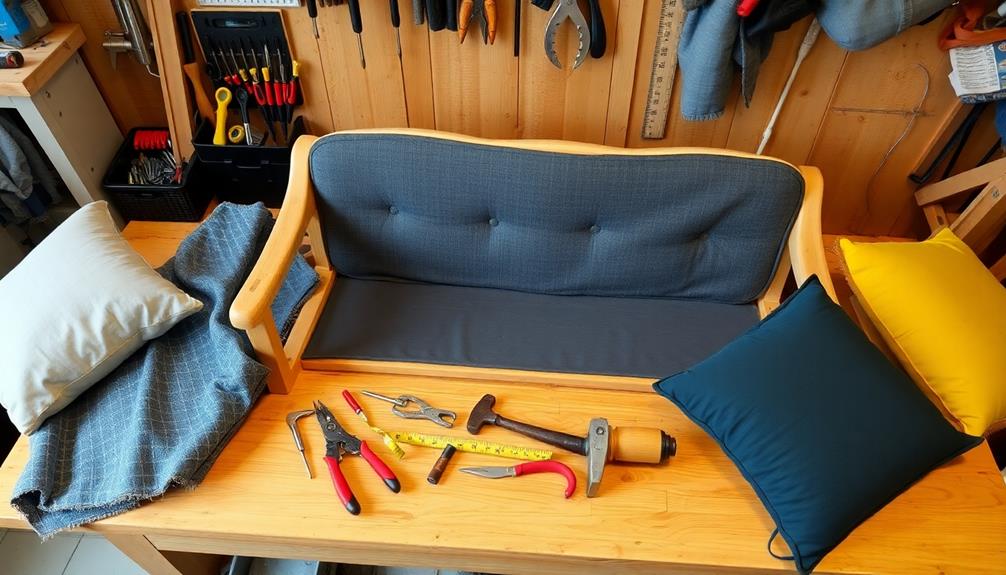
To dismantle your sofa effectively, you'll need an essential tool kit that includes screwdrivers, an adjustable wrench, and a staple puller.
For added convenience, consider using a vacuum designed for dust removal, as it can help clean up any debris that accumulates during the disassembly process, making it easier to manage your workspace (Best Vacuums for Dust Removal in 2024).
Don't forget to prioritize safety equipment, like gloves and goggles, to protect yourself during the process.
Organizing your disassembly materials will make the entire task smoother and more efficient.
Essential Tool Kit
An effective tool kit is essential when you're ready to dismantle a sofa. Having the right tools on hand will make the process smoother and more efficient.
Just like how airless paint sprayers offer versatility for various surfaces, having the right tools allows you to tackle different parts of the sofa with ease.
Here's a quick list of key items you should gather before you start:
- Screwdriver Set: This should include both Phillips and flathead types. You'll need these to remove various screws that hold the sofa together, so having them handy is a must.
- Adjustable Wrench: This tool is vital for loosening and tightening nuts that may be part of the sofa's frame. Its versatility will save you time and effort.
- Staple Puller: If you plan on reusing the upholstery, a staple puller is necessary. It allows you to remove staples without damaging the fabric, preserving its integrity.
In addition to these, consider a box cutter for cutting through upholstery and other materials.
With these tools in your arsenal, you'll be well-equipped to tackle the dismantling process effectively. Make sure you have everything ready, and you'll find the task much easier to manage.
Safety Equipment Necessity
Having the right tools is only part of the equation when dismantling a sofa; guaranteeing your safety while you work is equally important. To keep yourself protected, you'll need a few essential safety items.
Here's a quick overview of the necessary safety equipment:
| Equipment | Purpose |
|---|---|
| Safety Goggles | Protects your eyes from flying debris |
| Gloves | Safeguards your hands from cuts and scrapes |
| Dust Mask | Prevents inhalation of dust and particles |
| Non-slip Footwear | Guarantees stability while moving around |
| Protective Covering | Protects your knees during extended work |
Always wear safety goggles to shield your eyes from sharp objects while cutting upholstery or disassembling the frame. Use sturdy gloves to avoid injuries when handling tools. A dust mask is vital for preventing inhalation of harmful particles. Additionally, wear non-slip shoes for stability, and consider knee pads or a cushioned mat to protect your knees during prolonged periods on the floor. Prioritizing safety equipment will help you dismantle your sofa without unnecessary risks.
Organizing Disassembly Materials
Before diving into dismantling your sofa, it's important to gather the right tools and materials. Having everything organized before you start will make the process smoother and more efficient. Here are three key items you'll need:
1. Screwdriver Set: Make sure to include both Phillips and flathead screwdrivers to tackle various screws throughout the disassembly. The significance of having the right tools can't be overstated, as it can greatly impact your efficiency and safety during the process.
Many DIY enthusiasts recommend the value of home security systems as a precaution while working on home projects.
2. Adjustable Wrench: This is vital for loosening and tightening nuts that secure the frame components of your sofa.
3. Allen Wrench Set: Many sofas use hex bolts, so having this set on hand will save you time and frustration.
As you gather these tools, also prepare protective materials like blankets or bubble wrap. These will safeguard cushions and delicate parts during dismantling and transport.
Organize small components like screws and fasteners in labeled plastic bags or containers. This will simplify reassembly, ensuring you don't lose any significant pieces.
With the right tools and organization in place, you're set to efficiently dismantle your sofa without any hassle.
Fastener Identification and Removal
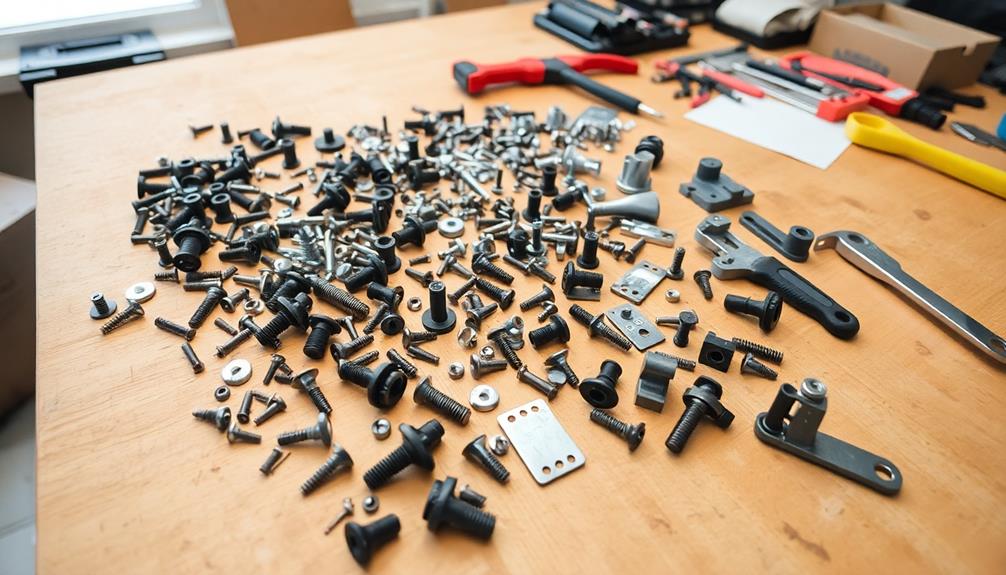
How can you effectively identify and remove fasteners when dismantling a sofa? Start by inspecting the frame for visible fasteners like screws, bolts, and staples. Make a note of their types and locations to choose the right tools for removal.
| Fastener Type | Tool Required |
|---|---|
| Screws | Screwdriver or Drill |
| Bolts | Wrench |
| Staples | Staple Puller |
| Hidden Screws | Prying Tool |
Begin with screws, using a screwdriver or drill, and keep them organized in labeled bags for easy reassembly later. Next, check under the upholstery and behind cushions for hidden fasteners. Carefully use a staple puller to remove any staples that secure the upholstery, ensuring you don't damage the fabric if you plan to reuse it.
After addressing all visible and hidden fasteners, double-check each section of the frame for any leftovers. This thorough approach will make your dismantling process smoother, allowing you to efficiently move on to the next steps without missing anything essential.
Transportation of Disassembled Parts
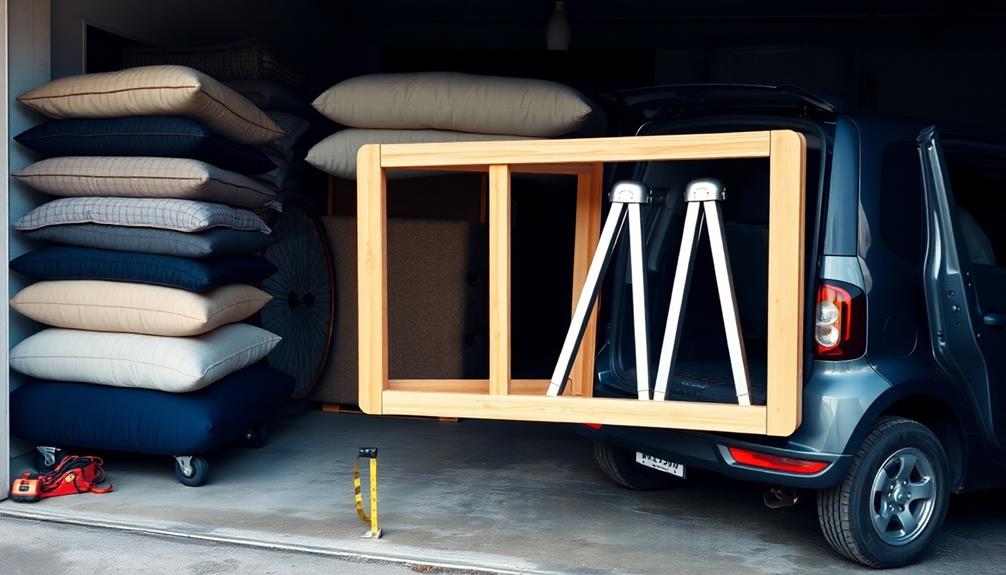
Transporting disassembled sofa parts requires careful planning to avoid damage and guarantee safety. To guarantee a smooth transportation process, follow these steps:
- Wrap each component: Use blankets or bubble wrap to protect the disassembled pieces from scratches and damage during transportation. This is especially important for the fabric and wooden parts. Engaging in high-quality content preparation guarantees that your furniture remains in prime condition throughout the move.
- Secure bundled parts: Once wrapped, bundle the components together using zip ties or rope. This prevents shifting and guarantees stability while loading them into your vehicle.
- Load heavy components first: Start with the heaviest parts, like the frame sections. Loading these first maintains balance, reducing the risk of tipping during transit.
In addition, consider using furniture sliders or a dolly to maneuver those heavy components more easily, minimizing the risk of injury and damage to your floors.
Remember to guarantee all items are secured in the vehicle to comply with safety regulations, preventing movement while driving.
With careful planning and secure packing, your transportation process will be hassle-free, making your furniture disposal or relocation much easier.
Disposal and Recycling Options
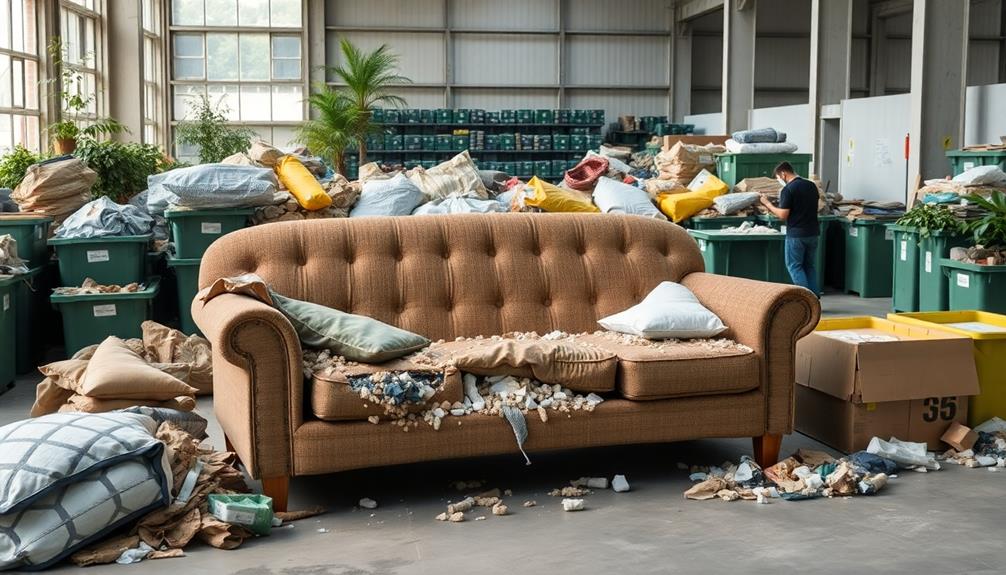
Once you've successfully transported your disassembled sofa parts, it's time to contemplate the best ways to dispose of or recycle them.
Check your local waste management guidelines for bulk pickup services; many municipalities offer scheduled collection days for large items like sofas. This can simplify your waste removal process considerably.
If your sofa's in decent shape, consider donating it to organizations like Goodwill or Habitat for Humanity. They often accept gently used furniture, allowing your old furniture to find a new home while helping those in need.
For recycling, investigate local recycling programs that accept specific materials from your sofa. Metal frames, foam cushions, and upholstery fabric might be eligible for recycling, so make sure to know what your local centers accept.
If you prefer a hassle-free option, services like 1-800-GOT-JUNK? specialize in responsible disposal. They guarantee your sofa is recycled or donated, minimizing contributions to landfills.
Additionally, look for eco-friendly disposal facilities, which promote material reuse and reduce environmental impact. By considering these options, you can responsibly manage your old furniture's end-of-life journey.
Frequently Asked Questions
Can You Disassemble a Sofa?
Yes, you can disassemble a sofa. Most models allow for easy separation of components. Just check for hidden screws, use basic tools, and keep everything organized for a smoother reassembly process when you're done.
How to Dismantle a Sofa to Fit Through a Door?
You've got a tight doorway, and that sofa's looking stubborn. Measure both carefully, remove cushions, and unscrew the arms. Flip it over to access hidden fasteners, then reassemble it inside. Easy peasy!
How Easy Is It to Break up a Sofa?
Breaking up a sofa can be surprisingly easy. You'll typically remove cushions and legs first. With the right tools and some patience, you can tackle it efficiently, especially if the design allows for straightforward disassembly.
How Do You Tear up a Couch?
Tearing up a couch's like starting a wild adventure! You'll yank cushions, slice through fabric like a superhero, and unearth hidden treasures. Grab your tools, and let's release your inner demolition expert!
Conclusion
As you dismantle your sofa, think of it as peeling away the layers of a cherished memory, revealing the bare bones beneath. Each piece you separate tells a story, just like the fabric of your life woven into its cushions. By the end, you're left with a collection of parts—wood, springs, and fabric—each ready for a new journey, symbolizing not just the end of one chapter, but the beginning of countless possibilities for renewal and transformation.
